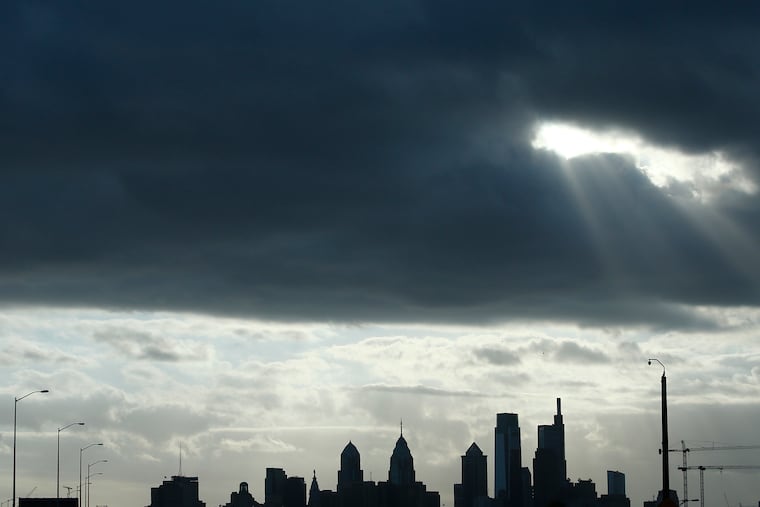May is giving Philly the cold shoulder with an unusually prolonged cool spell
If forecast holds, this will be longest stretch of May days with temperatures failing to reach 70 since 1978. It's good for azaleas, and pollen sufferers.

May cool spells aren’t all that unusual, but this is likely to become the longest stretch of May days without a high of 70 or better in Philadelphia in more than four decades.
An informal survey indicates the recent atmospheric behavior hasn’t been wildly popular around here — wind chills in the 40s on Mother’s Day, with a high no better than 57?
And the sun itself seems to have shown a certain disdain for it: The region awaits its first clear day of the month, and the National Weather Service has classified six of the first 10 days as “cloudy.”
» READ MORE: As pollen torments millions, it might be getting worse, and it’s poorly measured in America
Meteorologists attribute the sequence of daytime highs 10 to 15 degrees below normal that began Thursday to a persistent upper-air trough, or area of low pressure that promotes those sun-obscuring clouds and coolness.
The trough has ruled over the East, said Trent Davis, a meteorologist with the National Weather Service in Mount Holly.
In addition, the upper-level jet stream winds that represent the battleground between warm and cold air generally have been suppressed south, said Paul Walker, senior meteorologist with AccuWeather Inc.
It was quite a chilly Mother’s Day weekend in the northeastern half of the country. In Detroit, it didn’t get above 50 on Sunday. And most of Michigan was under a freeze warning for Tuesday morning.
On the sunny side, Walker said, the depressed jet would help explain why the number of tornadoes in the nation last month was at a 30-year low for an April.
» READ MORE: In a twist, tornadoes hit a 30-year April low across the country
Thanks to the overall pattern, low-level moisture from the Gulf, critical fuel for tornadoes, has been shut off for the most part, said Matthew Elliott, the warning coordination meteorologist with the government’s Storm Prediction Center.
The coolish temperatures have been a boon for the azaleas and other blooms — flower shops are refrigerated for a reason — and the chill has been the ally of allergy sufferers as pollen counts have been below extreme levels.
Pollen from trees and grass is all about fertilization, says Leonard Bielory, who has an allergy practice, is a certified pollen counter, and chair of the National Allergy Bureau. Temperatures in the 50s and 60s are mood-killers: “When it’s cold,” he said, “most biological processes slow down.”
However, he does expect to find more love in the air next week as temperatures warm, a process that is forecast to begin Thursday.
Highs Tuesday and Wednesday are expected to be in the mid-60s, which would make eight consecutive days of Philadelphia’s official temperature failing to reach 70.
That would pass the seven-day stretch of five years ago, and match the one of the first eight days of May 1978, according to data kept by the Pennsylvania State Climatologist office.
“Probably Thursday we’ll be tickling 70,” said Walker. If the under-70 run should make it to nine days, that would be the longest one since the 12-day stretch of May 1967 during those ultra-cool 60s. The year before, on May 11, the official reading dropped to 28, the lowest May temperature ever in Philadelphia.
Here in 2021, Walker said 80 or higher might be in play next week.
The pollen likely will notice.